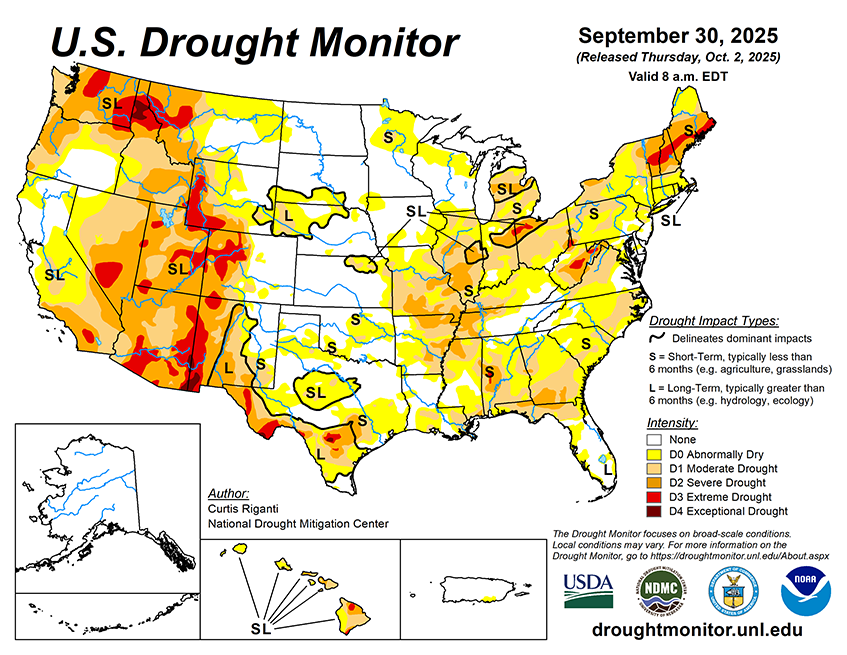Between the evening of Wednesday, Oct. 1 and Monday, Oct. 6, the National Weather Service Weather Prediction Center is forecasting mostly dry weather across large portions of the Contiguous U.S., spanning from southern California east and northeast through the Ohio Valley, eastern Great Lakes and Northeast. Outside of the Southeast, precipitation amounts of at least 0.75 inches are confined to parts of the Sierra Nevada, northern Nevada, northern Utah, parts of Idaho, northern Wyoming, southern Montana, western South Dakota and central North Dakota. Heavier rain amounts are forecast in parts of southeast Louisiana and the Mississippi Gulf Coast, far southern South Carolina, far southeast Georgia and much of the Florida Peninsula. In the Florida Peninsula and far southeast Louisiana, rainfall amounts may exceed 4 inches.
Looking ahead to Oct. 7-11, forecasts from the National Weather Service Climate Prediction Center (CPC) strongly favor above-normal precipitation in the Southwest U.S., especially Arizona and New Mexico, while above-normal precipitation is moderately favored in parts of the central Great Plains, Upper Midwest and Florida Peninsula. The CPC forecast slightly favors below-normal precipitation in parts of the south-central U.S. and parts of the northern Pacific Coast. Most of the southwest, central and eastern U.S. are favored to see above-normal temperatures, alongside the far northwest. Portions of the West spanning California into central and eastern Montana may see near-normal temperatures.











